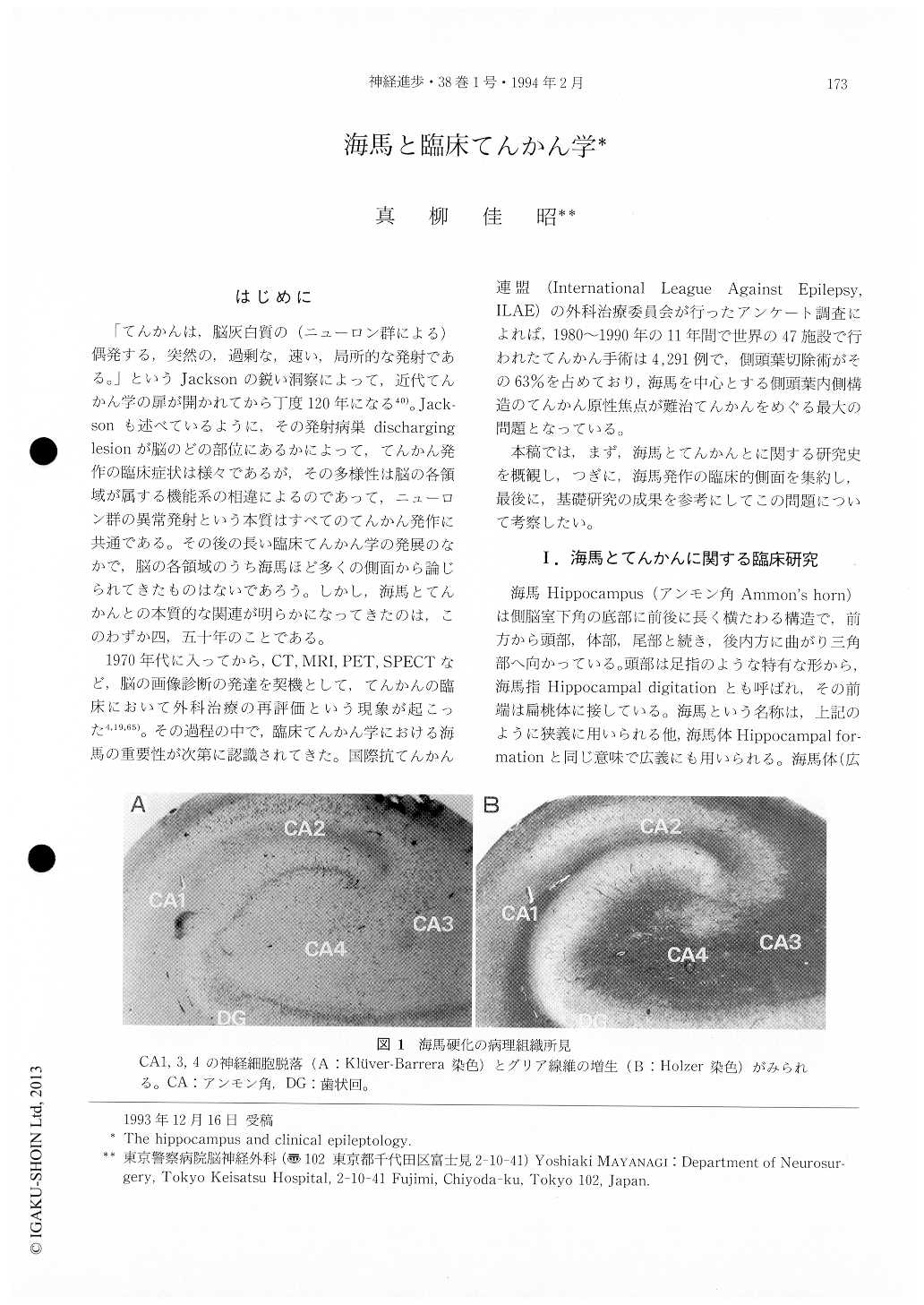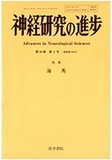Japanese
English
- 有料閲覧
- Abstract 文献概要
- 1ページ目 Look Inside
はじめに
「てんかんは,脳灰白質の(ニューロン群による)偶発する,突然の,過剰な,速い,局所的な発射である。」というJacksonの鋭い洞察によって,近代てんかん学の扉が開かれてから丁度120年になる40)。Jacksonも述べているように,その発射病巣discharginglesionが脳のどの部位にあるかによって,てんかん発作の臨床症状は様々であるが,その多様性は脳の各領域が属する機能系の相違によるのであって,ニューロン群の異常発射という本質はすべてのてんかん発作に共通である。その後の長い臨床てんかん学の発展のなかで,脳の各領域のうち海馬ほど多くの側面から論じられてきたものはないであろう。しかし,海馬とてんかんとの本質的な関連が明らかになってきたのは,このわずか四,五十年のことである。
1970年代に入ってから,CT,MRI,PET,SPECTなど,脳の画像診断の発達を契機として,てんかんの臨床において外科治療の再評価という現象が起こった4,19,65)。
For the past one hundred years, the hippocampus has been the subject of interest for both clinicians and researchers in epilepsy. Although the ammon's horn sclerosis was discovered in the epileptic brains about 170 years ago, this pathology has been extensively studied after the publication of Sommer's historical paper in 1880. In this article, the history of researches on the relationship between the hippocampus and epilepsy was traced, to point out the significance of hippocampal sclerosis as the cause of psychomotor (complex partial) seizures, originating in the temporal lobe.

Copyright © 1994, Igaku-Shoin Ltd. All rights reserved.


